Tomato Plant Diseases – Common Tomato Diseases and What to do About Them
This post may contain affiliate links. Please see the privacy policy for details.
The tomato is a vegetable that comes in all shapes and sizes. From tiny grapes to huge, meaty beefeaters, this most common homegrown produce can be found on tables around the world.
There is something truly heartbreaking about working so hard in your garden only to find that your plants are sick and dying off rather than producing ripe delicious fruits.
Tomatoes are affected by several common diseases that can cause a problem leading to a damaged harvest or the need to remove the plant altogether.
Here are a few common tomato plant diseases and what to do about them so you can get the most out of your garden this year.
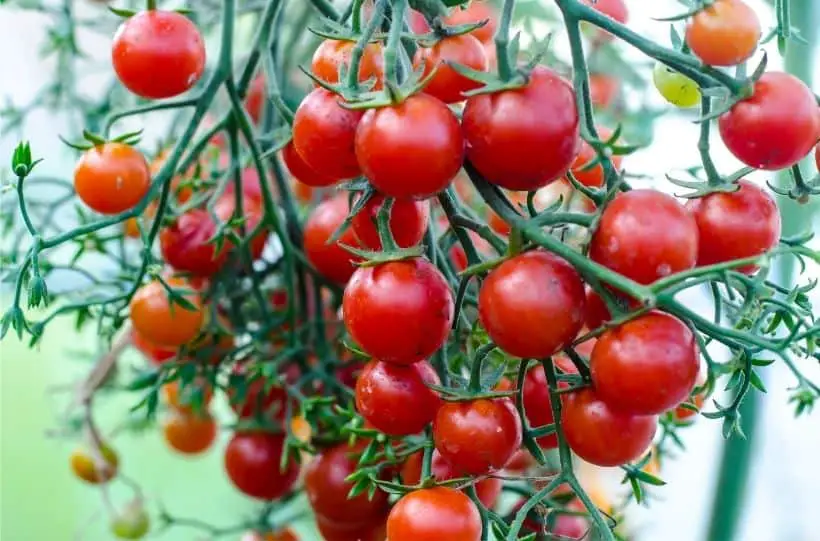
Blossom End Rot
Blossom end rot is a common tomato disease that often leaves gardeners heartbroken as their tomato begins to form with excitement only to start to rot from the bottom up.
There is no way to save a fruit that has begun to rot and it should be removed from the vines to allow the plant to focus on healthy fruits.
To treat this you should add calcium to your soil. Test the PH level to be sure there is enough acid in the soil for your tomatoes to collect and use the calcium in the soil and that you are watering your tomatoes well enough to allow the plant to pull calcium from the soil.

This common tomato disease is easily fixed and most plants go on to recover and produce ripe juicy fruits throughout the rest of the season.
To help prevent blossom end rot be sure to rotate your garden beds each year and always till in plenty of fresh compost at the beginning of the season.
Calcium and magnesium-based fertilizer can be used constantly through the growing season for thriving tomato plants that do not have these issues.
Stemphylium Gray Leaf Spot
Gray leaf spot affects mainly the leaves of tomatoes, starting with the oldest leaves. However, it can also affect the stems of the plant.
The disease is not found in fruit but can be found in infected seeds. You should never grow seeds from a plant infected with gray leaf spots as the resulting plants are likely to have it as well.
For tomatoes infected with gray leaf spot, the leaves in the early stages have a few small, dark spots visible on the top and bottom surfaces.
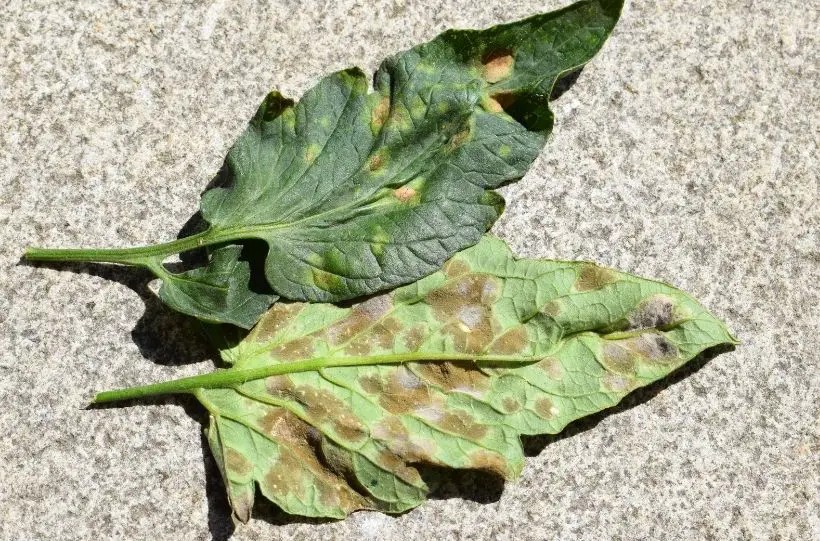
There is a yellow halo surrounding each brown spot. A grayish-brown color develops on the spots as they enlarge, giving this disease its name.
The spots eventually lose their center and crack. Around the leaf area, yellow leaf spots appear. The leaves begin to drop. This will prevent your plant from producing fruit.
Remove plants that have been affected. You should burn the plants or throw them away in the trash. Do not compost or put these plants in your yard waste collection where they would likely be composted at the collection facility.
Anthracnose
Anthracnose is a common issue for tomatoes and can infect the leaves, fruit, and flowers. Anthracnose primarily affects the ripe and overripe fruits of your tomatoes.
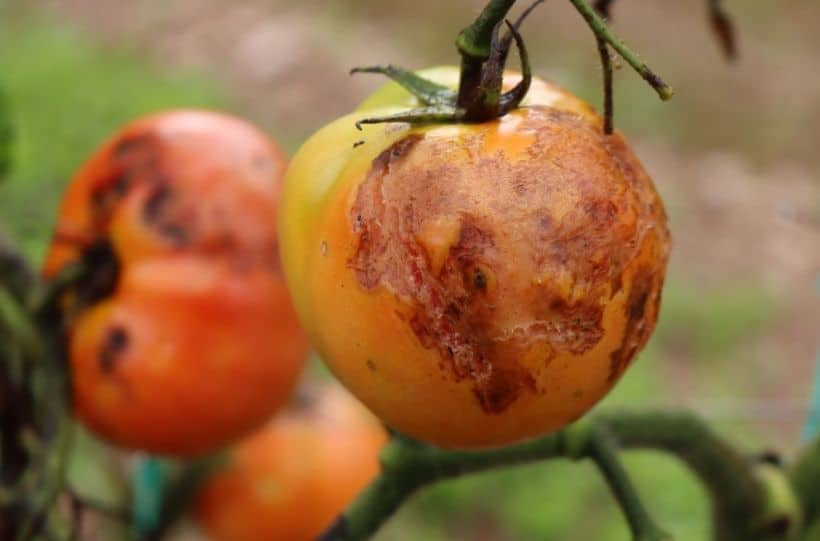
To protect your tomatoes themselves you should harvest when ripe, checking daily during the growing season. This disease is identified by brown and tan spots on your tomatoes and even the roots as the tomatoes begin to ripen.
This fungus takes hold of lower leaves that have been damaged by early blight and pests. The primary cause of this is your tomato plants being too wet. To help protect your plants avoid watering the leaves and water at the base. As your tomatoes begin to ripen, reduce step back on the water to avoid overwatering.
Fungicides can be an effective way to control anthracnose. For those that live in a wet humid climate, fungicides are an important part of keeping your garden healthy by preventing mold and fungus from taking over your garden.
Blight
Early blight is a common tomato plant disease that appears as bulls-eye-shaped brown spots on the lower leaves of a plant. A yellowish tint often develops around the spots. The plant will eventually lose the infected leaves.
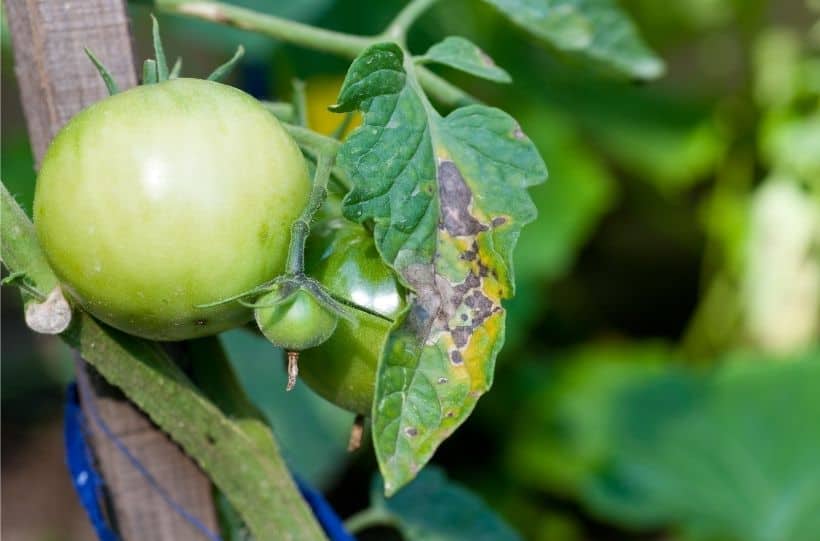
Despite symptoms of diseases progressing up the plant, tomatoes will still ripen. This common problem can be treated with a fungicide as well as the timing and removal of leaves that are affected in the early stages.
Treat carefully and quickly as this can spread from plant to plant.
With a similar name, late blight is possibly the most destructive tomato plant disease. Luckily you are unlikely to see this issue particularly if you live in the north where it can not handle the cold of winter.
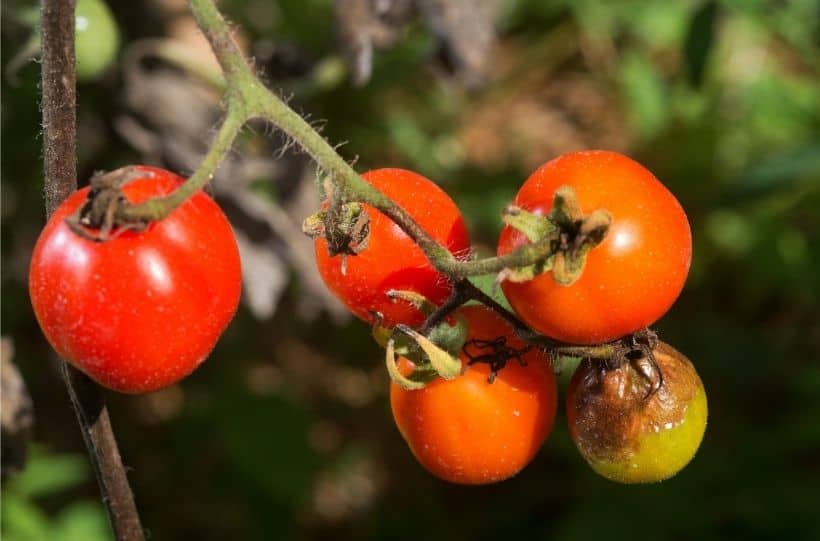
The biggest sign of this is that it looks like early blight but often starts at the top of the plant. If this happens to your plants your best bet is to pull the plant and burn it immediately.
Do not use the same soil for tomatoes for the following few years if you live in the south where this can survive.
For more support with growing tomatoes, check out the following guides:
